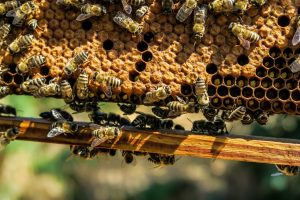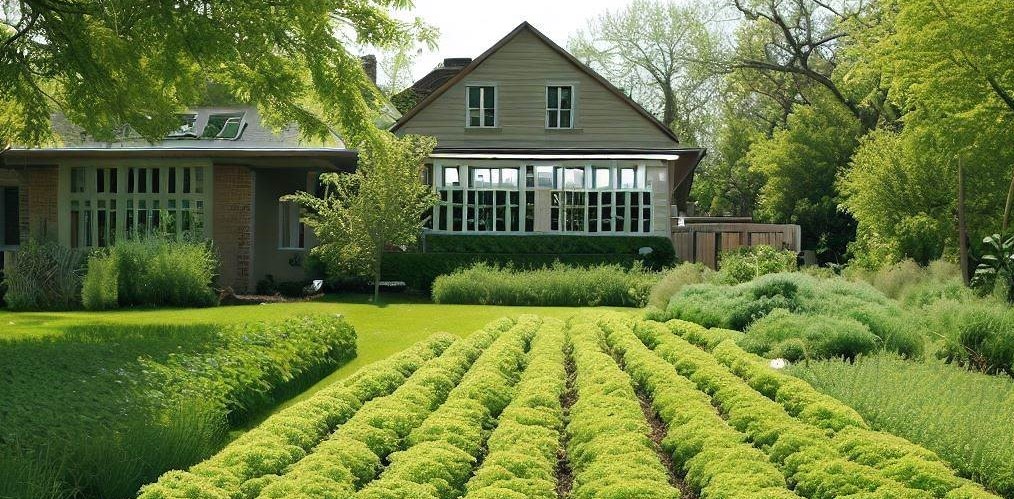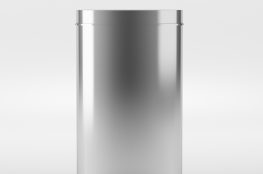Installing a bee hive in your backyard can be a rewarding and beneficial experience, both for the environment and for your own enjoyment. In addition to being a great part of a self-sufficient backyard, bees are excellent pollinators and play a crucial role in the ecosystem, but their populations are declining due to habitat loss and other factors.
In addition to providing a safe haven for bees, installing a bee hive in your backyard can also have other benefits. Bees are excellent pollinators and can help to increase the productivity of your garden, resulting in larger and healthier fruits and vegetables. Additionally, beekeeping can be a fun and rewarding hobby, allowing you to connect with nature and learn about the fascinating world of bees.
Here are 9 tips for installing a bee hive in your backyard.
Seek Professional Help
First off, you can cut out the other 8 steps if you decide it’s best to just hire a professional to install your beehive. In fact, this is what I’d recommend. If you’re new to beekeeping or if you encounter any issues with your bee hive, it’s best to seek professional help. A local beekeeper or certified beekeeping expert can provide advice and services to help you maintain a healthy and productive bee colony.
Just like with plumbing or electrical work, sometimes it’s just easier and safer to hire someone that definitely knows what they’re doing. But if you are determined to go about it alone, here are things to know.
Choose the Right Location
When choosing a location for your bee hive, it’s important to consider several factors. Bees require plenty of sunlight and protection from wind and rain, so choose a location that receives plenty of sun but is sheltered from the elements. Also, consider the proximity to neighbors and any potential hazards, such as pets or children.
Get the Right Equipment
Before you install your bee hive, make sure you have all the necessary equipment. This includes a hive body, frames, a queen excluder, a hive tool, and protective gear for yourself. You may also want to invest in a smoker, which can be used to calm the bees during hive inspections.
Start with a Nucleus Colony
If you’re new to beekeeping, it’s best to start with a nucleus colony, which is a small group of bees with a queen. This will give you a chance to learn the basics of beekeeping and get comfortable working with bees before you start a full colony.
Provide a Water Source
Bees require a reliable source of water, especially during the hot summer months. Provide a shallow dish or bird bath filled with water near the hive to ensure the bees have access to water. You can also add rocks or twigs to the water source to provide a landing spot for the bees.
Plant Bee-Friendly Flowers

To support the health and productivity of your bee hive, plant a variety of bee-friendly flowers and plants in your backyard. This will provide the bees with a diverse source of nectar and pollen, which is essential for their health and productivity. Some good options include lavender, sunflowers, daisies, and herbs such as mint and thyme.
Keep the Hive Clean
To ensure the health of your bee hive, it’s important to keep it clean and free of debris. Regularly inspect the hive and remove any dead bees or debris that may have accumulated. This will help to prevent the spread of disease and ensure the hive remains healthy.
Monitor the Health of the Colony

Regular inspections are essential for monitoring the health of your bee colony. During inspections, look for signs of disease, pests, or other issues that may be affecting the colony. Also, check for signs of honey production and ensure that the queen is laying eggs and the brood is healthy.
Be Prepared for Swarming
Swarming is a natural process that occurs when a hive becomes overcrowded and the bees decide to split and form a new colony. While swarming can be a sign of a healthy colony, it can also be alarming for new beekeepers. Be prepared for swarming by having an extra hive body and frames on hand in case you need to split the colony.
Rewarding, But Not for Everybody
It’s important to note that beekeeping is not for everyone. It requires time, effort, and commitment to ensure the health and productivity of the colony. Additionally, bee stings can be a risk, so it’s important to take precautions and wear protective gear during inspections and maintenance.
Installing a bee hive in your backyard can be a rewarding and beneficial experience. By choosing the right location, providing a water source, planting bee-friendly flowers, and keeping the hive clean and healthy, you can support the health and productivity of your bee colony.
Regular inspections and monitoring of the colony are essential for ensuring the continued health of the hive, and being prepared for swarming can help you to maintain a healthy and productive colony. With the right equipment, knowledge, and care, anyone can successfully install and maintain a bee hive in their backyard.
Overall, installing a bee hive in your backyard can be a wonderful way to support the environment, improve the productivity of your garden, and connect with nature. By following these tips and seeking professional help when needed, anyone can successfully install and maintain a healthy and productive bee colony.




